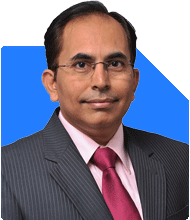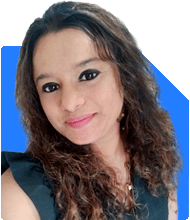Should I stay invested in poorly performing Quant Mutual Funds?
Janak Patel |71 Answers |Ask -Follow
MF, PF Expert - Answered on Oct 17, 2024
He is the CEO and founder of InfiniumWealth, a firm that specialises in designing goal-specific financial plans tailored to help clients achieve their life goals.
Janak holds an MBA degree in finance from the Welingkar Institute of Management Development and Research, Mumbai, and has over 15 years of experience in the field of personal finance. ... more

Respected Sir, I did invest in Quant Mutual Fund lumpsum in Large & Mid Cap , Flexi cap and Infra. I did invest on 7-8 June 2024. But These funds are performing very poorly since then as compared to their peers. May I request you to please guide me if I shall stay invested for long period or reddem?
Mutual Funds are a good option for investment. The investment horizon/timeline is very important when you consider equity mutual funds, they need to be invested for the long period (7+ years).
You have only recently started in June 2024, so keeping patience with your investment is important. You can track the progress of your investment but don't get influenced by day to day fluctuation in its NAV. Decisions should be taken based on many factors but do consider 1-2 years duration to see if fund performance is steady, improving or below par compared to your expectation and its peers and the market.
Now coming to the funds you have provided - Quant Large and Midcap and Quant Flexicap are good funds and I think you should be patient. Note - both are actively managed funds and you can expected to see fluctuations in the short term. Stay invested in these 2 funds as they are well diversified and long term prospects look good.
Quant Infrastructure fund is a Sectoral fund and the fluctuations will be high. If your risk profile is very high, then you can continue. There will be a period of time when the sector loses favor in the market and thus the returns will be impacted and during good times it will provide good returns.
Alternately if you decide to exit then include a fund from another fund house which is well diversified and aligns to your risk profile. Some good options to consider - an Index fund based on Nifty 500 (passive) or a multicap fund (active) - to get a a well diversified exposure to Large-Mid-Small cap.
Note- Redemption at this time may attract exit load apart from tax implications for short term.
Regards
Janak Patel
Certified Financial Planner.
You may like to see similar questions and answers below
Janak Patel |71 Answers |Ask -Follow
MF, PF Expert - Answered on Oct 18, 2024
Milind Vadjikar | Answer |Ask -Follow
Insurance, Stocks, MF, PF Expert - Answered on Mar 25, 2025
Ramalingam Kalirajan |10870 Answers |Ask -Follow
Mutual Funds, Financial Planning Expert - Answered on Nov 29, 2024
Jinal Mehta | Answer |Ask -Follow
Financial Planner - Answered on Feb 15, 2025
Reetika Sharma |417 Answers |Ask -Follow
Financial Planner, MF and Insurance Expert - Answered on Nov 26, 2025
Dr Shyam Jamalabad |108 Answers |Ask -Follow
Dentist - Answered on Dec 05, 2025
Dr Shyam Jamalabad |108 Answers |Ask -Follow
Dentist - Answered on Dec 05, 2025
Dr Shyam Jamalabad |108 Answers |Ask -Follow
Dentist - Answered on Dec 05, 2025
Dr Dipankar Dutta |1836 Answers |Ask -Follow
Tech Careers and Skill Development Expert - Answered on Dec 05, 2025
Ulhas Joshi |280 Answers |Ask -Follow
Mutual Fund Expert - Answered on Dec 05, 2025
Dr Dipankar Dutta |1836 Answers |Ask -Follow
Tech Careers and Skill Development Expert - Answered on Dec 04, 2025
Ravi Mittal |676 Answers |Ask -Follow
Dating, Relationships Expert - Answered on Dec 04, 2025
Anu Krishna |1745 Answers |Ask -Follow
Relationships Expert, Mind Coach - Answered on Dec 04, 2025
Anu Krishna |1745 Answers |Ask -Follow
Relationships Expert, Mind Coach - Answered on Dec 04, 2025
Mayank Chandel |2562 Answers |Ask -Follow
IIT-JEE, NEET-UG, SAT, CLAT, CA, CS Exam Expert - Answered on Dec 04, 2025
































